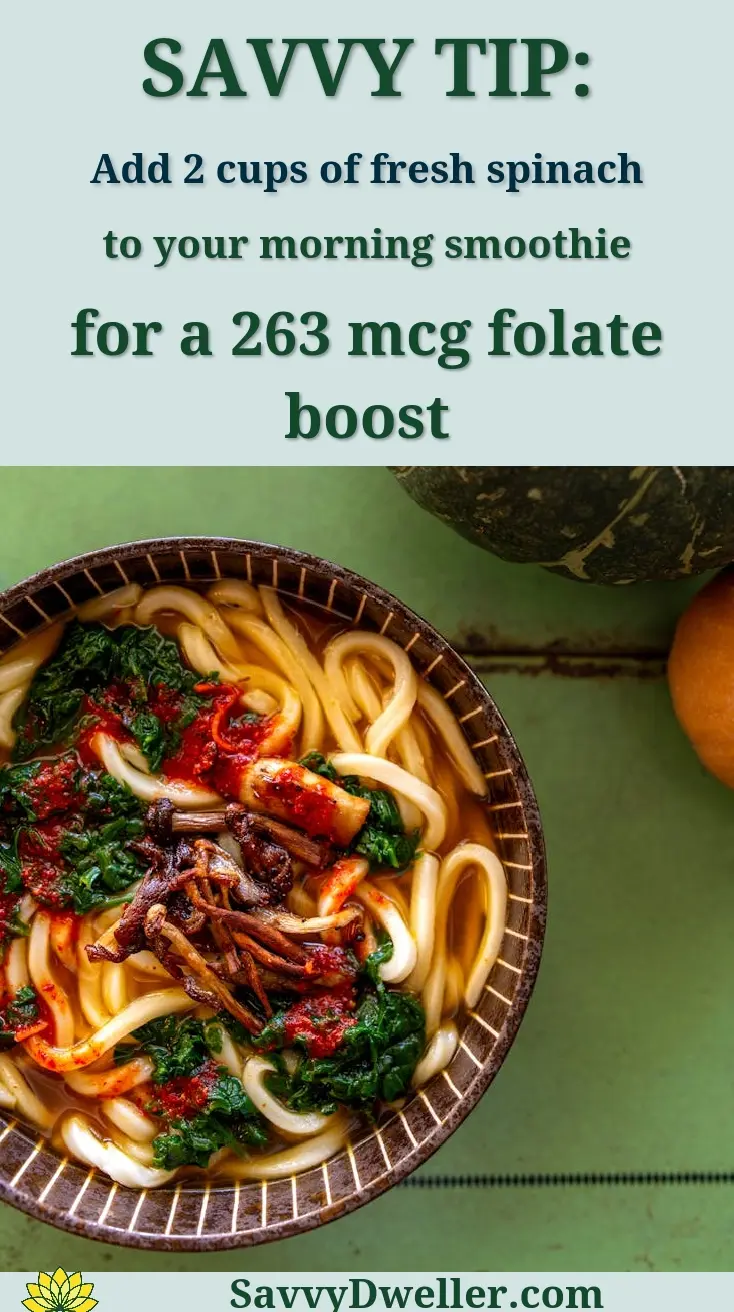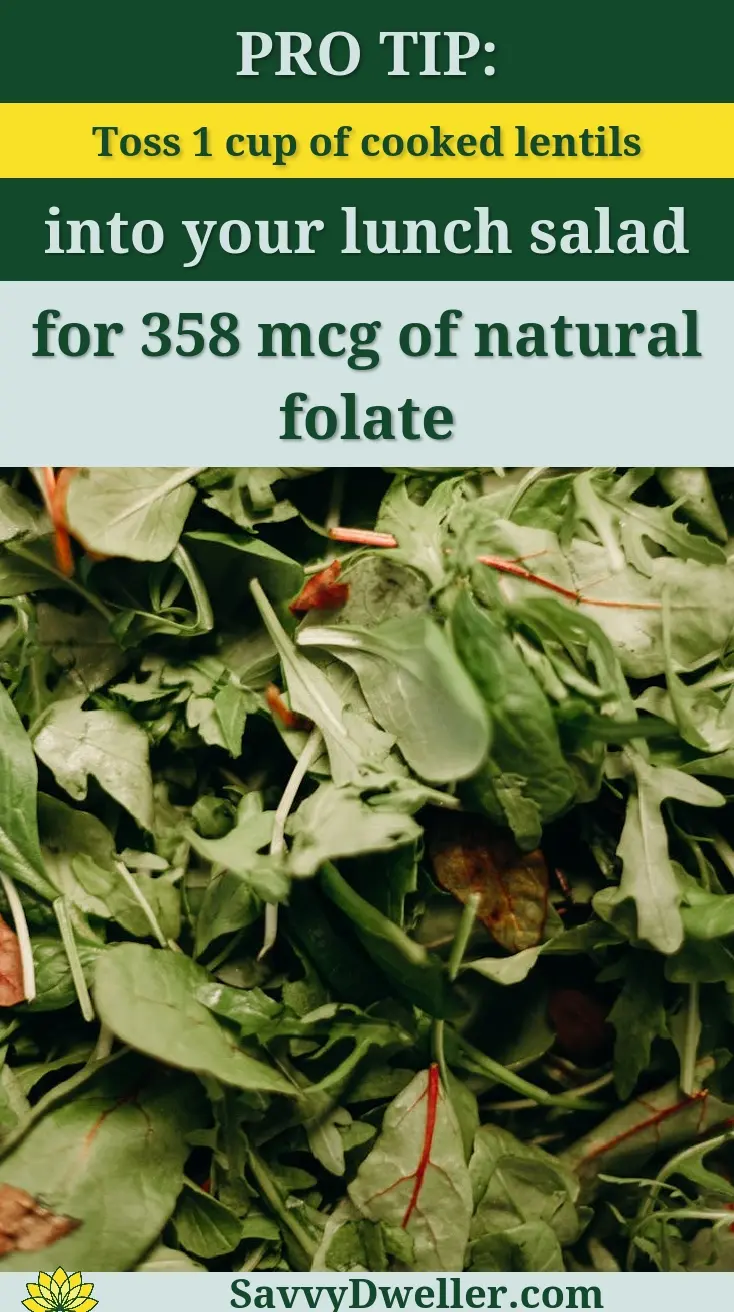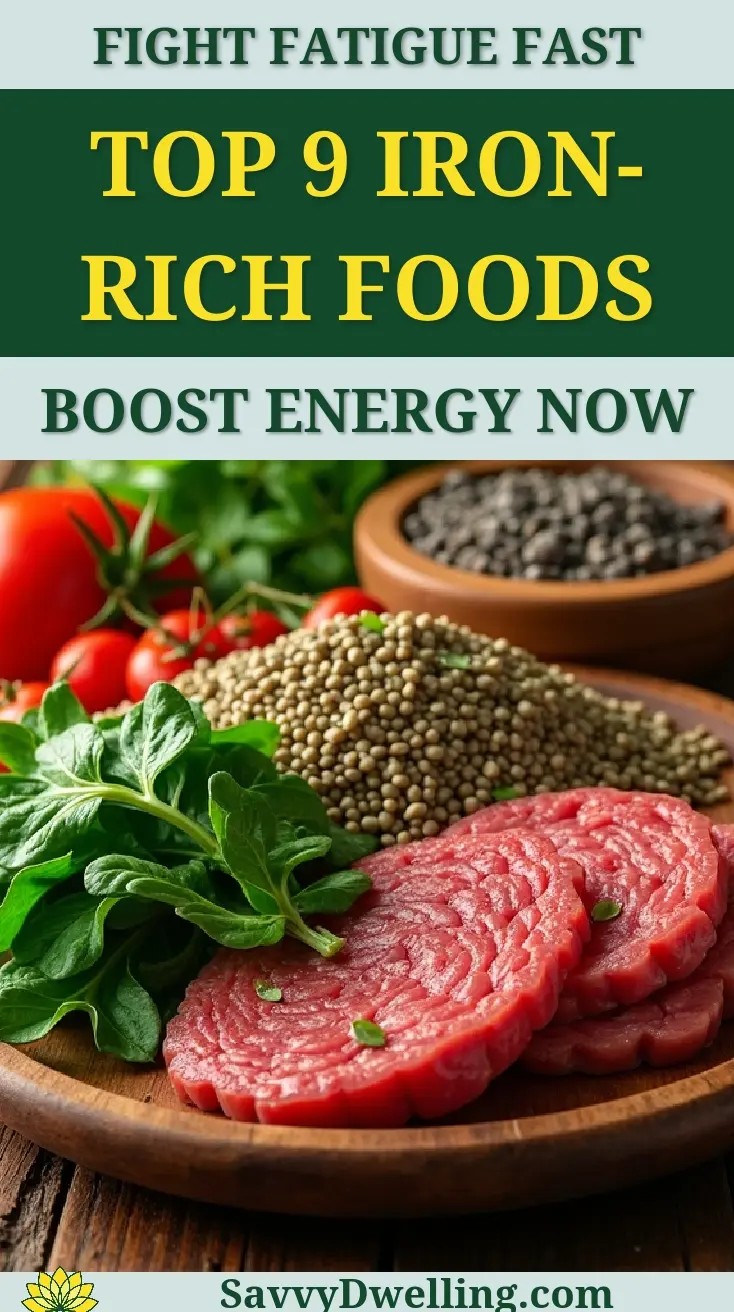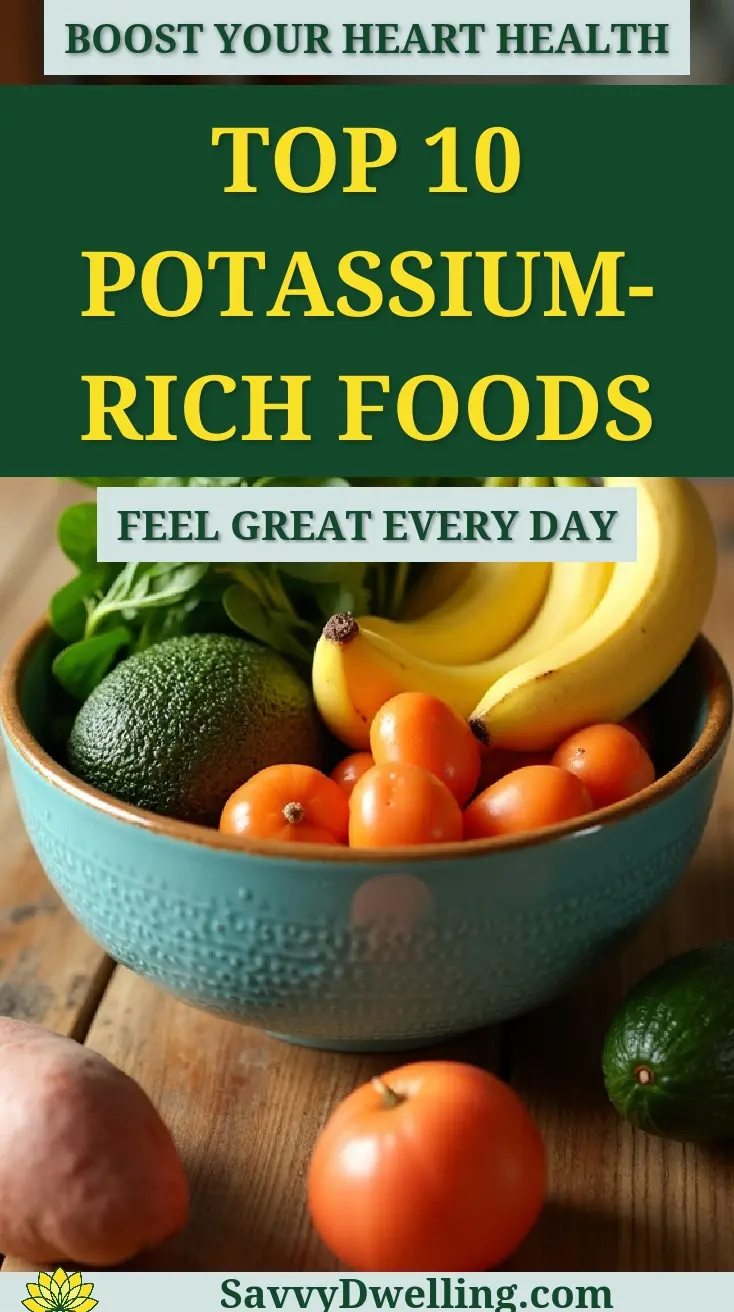Are You Getting Enough B9? The Top 6 Vitamin B9 Foods
Feeling unusually tired, foggy, or run down despite getting enough sleep? You might be missing one of the most important B vitamins your body needs to function at its best. Vitamin B9, also known as folate, plays a vital role in energy production and healthy cell development, yet many people unknowingly fall short of their daily needs.
We’ve spent years researching the most effective food sources of vitamin B9 and tested countless meal combinations to find what actually works in busy, real-world kitchens. This guide will show you exactly which six foods pack the most folate punch and how to incorporate them into your daily routine without complicated meal planning. You’ll walk away knowing simple, practical ways to boost your B9 intake naturally through delicious, accessible foods that fit seamlessly into your current lifestyle.
Contents
- At a Glance: The Best Vitamin B9 Food Sources
- 1. Dark Leafy Greens: Spinach and Kale
- 2. Legumes: Lentils, Black Beans, and Chickpeas
- 3. Asparagus: The Spring Vegetable Champion
- 4. Avocados: Creamy Nutrition Packed With Folate
- 5. Citrus Fruits: Oranges and Orange Juice
- 6. Fortified Grains: Cereals and Breads
- The Science Made Simple: Why Your Body Needs Adequate B9
- Signs You Might Need More Vitamin B9 in Your Diet
- Common Mistakes to Avoid When Increasing Your B9 Intake
- Frequently Asked Questions About Vitamin B9
- Final Words
At a Glance: The Best Vitamin B9 Food Sources
Finding foods high in vitamin b9 doesn’t have to be complicated. Your body thrives on folate from natural sources, and many delicious options pack impressive amounts of this vital nutrient.
The top vitamin b9 sources span multiple food groups, making it easier to meet your daily needs through varied meals. From vibrant leafy greens to hearty legumes, these foods naturally support your body’s folate requirements.
| Food Category | Top Sources | B9 Content per Serving | Best Preparation |
|---|---|---|---|
| Dark Leafy Greens | Spinach, Kale, Romaine | 263-194 mcg per cup | Raw or lightly steamed |
| Legumes | Lentils, Black Beans, Chickpeas | 358-256 mcg per cup | Properly soaked and cooked |
| Vegetables | Asparagus, Broccoli, Brussels Sprouts | 262-156 mcg per cup | Quick cooking methods |
| Fruits | Avocado, Oranges, Papaya | 120-40 mcg per serving | Fresh and raw |
| Fortified Grains | Cereals, Breads, Pasta | 100-400 mcg per serving | Check fortification levels |
These vitamin b9 rich foods work synergistically when combined in meals. Pairing different sources throughout your day ensures steady folate availability for your body’s cellular processes.
The key to maximizing folate intake lies in choosing fresh, minimally processed options whenever possible. Heat, light, and extended storage can reduce the vitamin b9 content in foods, making preparation methods crucial.
Adults typically need 400 micrograms of folate daily, though requirements increase during pregnancy and breastfeeding. Most people can easily meet these needs by incorporating 2-3 servings from different food sources of vitamin b9 categories each day.
1. Dark Leafy Greens: Spinach and Kale
Why These Greens Are B9 Powerhouses
Spinach and kale stand out as exceptional vitamin b9 sources because of their naturally high folate concentrations. A single cup of cooked spinach delivers approximately 263 micrograms of folate, which covers nearly 66% of your daily needs.
Kale provides about 19 micrograms per cup when raw, but the folate content increases significantly when cooked. These leafy greens also contain other nutrients that work synergistically with B9, including vitamin C and iron, which aid in folate absorption and utilization. Incorporating foods rich in vitamin K, like kale, is essential for maintaining optimal health. There are many other vitamin K-rich foods that can complement kale, providing a variety of nutrients in your diet.
The cellular structure of these greens naturally protects folate from degradation better than many other vegetables. This makes them reliable foods high in vitamin b9 that maintain their nutritional value even after light cooking.
Daily Serving Size for Optimal B9 Intake
For adequate B9 support, aim for 2-3 cups of raw leafy greens or 1-1.5 cups of cooked greens daily. One cup of cooked spinach alone provides more than half your daily folate requirement, making it one of the most efficient vitamin b9 rich foods.
If you’re mixing different greens throughout the week, rotate between spinach (highest in folate), kale, Swiss chard, and romaine lettuce. This variety ensures you’re getting consistent vitamin b9 intake while preventing taste fatigue.
Simple Ways to Add More Greens to Your Meals
Quick Smoothie Additions
Blending greens into smoothies masks their taste while preserving their folate content. Start with mild-tasting spinach before progressing to stronger kale to help your palate adjust.
- Add 1-2 cups of fresh spinach to berry smoothies
- Blend kale with pineapple and mango for tropical flavors
- Freeze pre-washed greens in smoothie-sized portions
- Mix greens with banana and nut butter for creaminess
Salad Base Swaps
Replace iceberg lettuce with nutrient-dense alternatives to boost your vitamin b9 sources effortlessly. These swaps dramatically increase folate content without changing your eating habits.
- Use baby spinach as your go-to salad foundation
- Massage raw kale with lemon juice to soften tough fibers
- Create mixed green salads with spinach, arugula, and Swiss chard
- Add chopped raw greens to grain bowls and wraps

2. Legumes: Lentils, Black Beans, and Chickpeas
How Legumes Support Your B9 Needs
Legumes rank among the top vitamin b9 foods because they naturally concentrate folate during their growth process. One cup of cooked lentils provides approximately 358 micrograms of folate, covering nearly 90% of your daily requirement.
Black beans and chickpeas offer substantial folate content too, with about 256 and 282 micrograms per cup respectively. These protein-rich foods deliver B9 alongside fiber and plant-based protein, creating a nutritionally complete foundation for meals.
The folate in legumes remains stable during cooking, unlike some other vitamin b9 rich foods that lose nutrients when heated. This stability makes them reliable sources for consistent daily intake.
Best Preparation Methods to Preserve Folate
Soaking dried legumes overnight reduces cooking time and helps preserve their vitamin b9 content. Gentle simmering maintains more folate than high-pressure cooking methods.
- Soak dried beans and lentils in cool water for 8-12 hours
- Drain and rinse before cooking to remove anti-nutrients
- Simmer on low heat rather than rapid boiling
- Avoid adding baking soda, which can destroy folate
- Cook until tender but not mushy to retain nutrients
Canned legumes retain most of their folate content and offer convenience. Choose low-sodium varieties and rinse before using to reduce excess salt while preserving B9 levels.
Easy Legume Recipe Ideas for Busy Families
One-Pot Lentil Soups
Lentil soups maximize foods with b9 while requiring minimal preparation time. Red lentils cook fastest, making them perfect for weeknight meals that still deliver substantial folate content.
- Combine red lentils with diced tomatoes and vegetable broth
- Add curry spices for Indian-inspired dal
- Mix green lentils with carrots, celery, and herbs
- Create Mediterranean versions with lemon and oregano
Bean-Based Side Dishes
Transform canned beans into quick sides that boost your meal’s vitamin b9 content. These preparations work alongside any main dish while adding substantial nutritional value.
- Mash chickpeas with garlic and lemon for instant hummus
- Sauté black beans with cumin and lime juice
- Toss white beans with herbs and olive oil
- Roast chickpeas with spices for crunchy snacks
Also See: What to Eat on a Keto Diet: A Beginner’s Food List
3. Asparagus: The Spring Vegetable Champion
Why Asparagus Ranks High in B9 Content
Asparagus delivers an impressive 268 micrograms of folate per cup when cooked, making it one of the most concentrated vitamin b9 sources among vegetables. This spring vegetable provides about 67% of your daily B9 needs in a single serving.
The folate in asparagus exists in a highly bioavailable form, meaning your body absorbs and utilizes it efficiently. Asparagus also contains glutamate, which enhances folate absorption when consumed together.
Fresh asparagus maintains higher folate levels than frozen varieties, though both remain excellent foods containing vitamin b9. The nutrient concentration increases as the spears mature, making thicker stalks surprisingly nutritious.
Cooking Tips to Maximize Folate Retention
Light steaming preserves more folate than boiling, while roasting concentrates the B9 content by reducing water content. Quick cooking methods prevent vitamin b9 from leaching into cooking water.
- Steam asparagus for 3-4 minutes until bright green
- Roast at 400°F for 8-10 minutes with minimal oil
- Sauté quickly in a hot pan for 2-3 minutes
- Avoid overcooking, which turns spears mushy and reduces nutrients
- Save cooking liquid if boiling to use in soups or sauces
Creative Ways to Enjoy Asparagus Year-round
While fresh asparagus peaks in spring, frozen varieties maintain significant vitamin b9 rich food status throughout the year. Creative preparation methods help you incorporate this folate champion into diverse meals.
- Blend steamed asparagus into creamy soups
- Chop raw asparagus thinly for salads and slaws
- Grill asparagus spears for smoky flavor
- Add asparagus to frittatas and quiches
- Pickle asparagus spears for tangy snacks
- Puree cooked asparagus into pasta sauces
4. Avocados: Creamy Nutrition Packed With Folate
That beloved green fruit sitting on your counter delivers more than just Instagram-worthy toast toppings. A single medium avocado provides about 90 micrograms of vitamin B9, covering roughly 23% of your daily needs.
The healthy fats in avocados actually help your body absorb folate more effectively. This creamy fruit acts as a nutrient enhancer, making the B9 vitamins more bioavailable to your system. Avocados are not just great for folate; they come with a variety of health benefits. Incorporating avocados into your diet can boost heart health, improve digestion, and contribute to overall wellness.
The B9 Benefits Of This Healthy Fat
Avocados offer a unique advantage among vitamin B9 foods. Their monounsaturated fats support the absorption of fat-soluble vitamins while delivering water-soluble folate.
The combination of folate and healthy fats makes avocados particularly beneficial for pregnant women and anyone supporting cardiovascular health. This nutrient pairing supports proper cell division and DNA synthesis.
How Much Avocado Supports Your Daily Needs
Half a medium avocado gives you approximately 45 micrograms of folate. If you’re aiming to boost your vitamin B9 intake significantly, one whole avocado daily fits perfectly into a balanced eating plan.
For those watching portions, even a quarter avocado provides meaningful folate while adding creamy texture to meals. Consistency matters more than quantity when building your B9 levels naturally.
Beyond Guacamole: Fresh Avocado Ideas
Think beyond the obvious applications. Avocado works beautifully in unexpected places throughout your day.
- Blend into smoothies for extra creaminess without banana
- Dice into grain bowls with other vitamin B9 rich foods
- Mash with lemon juice as a spread for folate-fortified bread
- Slice over salads featuring dark leafy greens
- Add chunks to soups just before serving

5. Citrus Fruits: Oranges and Orange Juice
One medium orange delivers about 55 micrograms of folate, making citrus fruits surprisingly effective vitamin B9 sources. The bright, tangy flavor makes it easy to consume folate regularly without feeling like you’re taking medicine.
Citrus fruits also provide vitamin C, which supports folate absorption and utilization in your body. This natural pairing creates a synergistic effect that maximizes your B9 benefits.
Natural Folate in Fresh Citrus
Fresh citrus contains naturally occurring folate in its most bioavailable form. Unlike synthetic folic acid, the natural vitamin B9 found in oranges, grapefruits, and lemons integrates smoothly into your metabolic processes.
The folate in citrus fruits remains stable when stored properly in cool conditions. Fresh citrus retains its vitamin B9 content for weeks when refrigerated, making it a reliable folate source.
Whole Fruit Vs. Juice for B9 Intake
Whole oranges provide slightly more folate per serving than juice due to the concentrated nutrients in the pulp and membranes. A cup of fresh orange juice contains about 40 micrograms of folate, while a whole medium orange offers 55 micrograms.
Choosing whole fruit also gives you fiber, which slows sugar absorption and supports digestive health alongside your B9 intake. The fiber helps maintain steady energy levels throughout the day.
Pairing Citrus With Other B9-rich Foods
Citrus segments work beautifully with other top vitamin B9 foods. The acidity enhances iron absorption from leafy greens while contributing its own folate content.
- Add orange segments to spinach salads with avocado
- Squeeze lemon over steamed asparagus
- Mix grapefruit pieces into black bean salsa
- Use lime juice in lentil-based dishes
- Create smoothies combining citrus with leafy greens
6. Fortified Grains: Cereals and Breads
Since 1998, food manufacturers have fortified grain products with folic acid to support public health. A serving of fortified cereal can provide 100-400 micrograms of vitamin B9, often exceeding your daily needs in a single bowl.
These fortified grains represent one of the most concentrated vitamin B9 sources available in everyday foods. Fortified products have significantly reduced folate deficiency rates across populations worldwide.
Understanding Fortified Vs. Natural Folate
Fortified grains contain synthetic folic acid, which your body converts to usable folate. This process works efficiently for most people, though some individuals metabolize synthetic folic acid differently than natural folate from foods.
Fortified folic acid is more stable than natural folate, maintaining its potency through processing, storage, and cooking. This stability makes fortified grains reliable vitamin B9 sources year-round.
Reading Labels for Maximum B9 Benefits
Check nutrition labels for “folic acid” rather than “folate” on fortified products. The percentage Daily Value tells you exactly how much B9 you’re getting per serving.
Look for products listing folic acid among the first few ingredients for higher concentrations. Cereals fortified with 100% Daily Value provide 400 micrograms of folic acid per serving.
Smart Breakfast Choices for Folate Support
Pair fortified cereals with foods containing vitamin b9 naturally for a powerful morning boost. This combination gives you both synthetic and natural forms of folate.
- Top fortified cereal with sliced oranges
- Choose fortified whole grain toast with avocado
- Mix fortified oats with citrus segments
- Select enriched bagels topped with folate-rich spreads
- Combine fortified granola with citrus-based yogurt parfaits
The Science Made Simple: Why Your Body Needs Adequate B9
How Folate Supports Healthy Cell Development
Your body relies on vitamin B9 to create new DNA and repair existing genetic material in every single cell. Think of folate as your body’s construction manager, overseeing the building and maintenance of cellular structures throughout your tissues.
This process becomes especially important during periods of rapid growth. Pregnant women need nearly double the typical B9 intake because their bodies are literally building another human being from scratch.
Without sufficient folate foods in your diet, cell division slows down significantly. This affects everything from wound healing to the production of red blood cells, leaving you feeling sluggish and potentially developing anemia over time. It’s important to recognize that low levels of folate can lead to various health issues, including iron deficiency anemia. Being aware of the signs of iron deficiency anemia can help in addressing nutritional gaps before they become serious problems.
The Connection Between B9 and Energy Levels
B9 deficiency directly impacts your energy because folate helps produce healthy red blood cells that carry oxygen throughout your body. When you don’t get enough vitamin B9, your red blood cells become larger and less efficient at oxygen transport.
This condition, called megaloblastic anemia, makes you feel exhausted even after a full night’s sleep. Your heart has to work harder to pump oxygen-poor blood, creating a cycle of fatigue that food sources of vitamin B9 can help break. Taking steps to enhance your energy levels can be beneficial for those struggling with chronic fatigue. Incorporating vitamin-rich foods and maintaining a balanced diet plays a key role in fighting fatigue and boosting overall energy levels.
Many people notice improved energy levels within weeks of increasing their intake of vitamin B9 rich foods. The key is consistency—your body needs a steady supply of folate to maintain healthy blood cell production. Incorporating foods that provide a natural energy boost can further enhance your vitality. Options like whole grains, fruits, and nuts are excellent choices for maintaining high energy levels throughout the day.
Special Considerations for Different Life Stages
Adolescents going through growth spurts need more foods high in vitamin B9 than adults because their bodies are rapidly developing new tissues. Teenagers should aim for foods containing vitamin B9 at every meal to support their increased cellular demands.
Adults over 50 often struggle with B9 absorption due to changes in stomach acid production. They may need to focus on easily absorbed vitamin B9 sources foods like fortified cereals and citrus fruits rather than relying solely on leafy greens.
Women of childbearing age need consistent folate intake even when not pregnant. Neural tube defects occur in the first few weeks of pregnancy, often before women know they’re expecting, making daily vitamin B9 rich food consumption vital for reproductive health.
Signs You Might Need More Vitamin B9 in Your Diet
Early Warning Signs to Watch for
Persistent fatigue that doesn’t improve with rest often signals the beginning stages of B9 deficiency. Your body gives you subtle hints before developing serious symptoms, and recognizing these early signs can prevent more significant health issues. Feeling constantly tired may also be a sign of vitamin B12 deficiency, which is important for energy levels. It’s essential to be aware of the signs of vitamin B12 deficiency to maintain your overall well-being.
Changes in your mood, particularly increased irritability or difficulty concentrating, frequently accompany low folate levels. You might notice that tasks requiring mental focus become more challenging than usual, even when you’re getting adequate sleep.
Physical signs include:
- Pale skin or nail beds
- Shortness of breath during normal activities
- Cold hands and feet
- Unusual cravings for ice or starch
- Digestive issues like loss of appetite
Who’s at Higher Risk for B9 Deficiency
People following restrictive diets often miss out on top vitamin B9 foods without realizing it. Vegetarians and vegans generally get plenty of folate, but those avoiding grains or following very low-carb diets might struggle to meet their needs.
Individuals taking certain medications face increased risk. Metformin for diabetes, some seizure medications, and sulfasalazine for inflammatory bowel disease can interfere with folate absorption or increase the body’s need for B9 vitamins.
Those with digestive conditions like celiac disease or Crohn’s disease may not absorb vitamin B9 found in food effectively. Alcohol consumption also significantly reduces your body’s ability to use folate, even when you’re eating foods that are high in vitamin B9.
Common Mistakes to Avoid When Increasing Your B9 Intake
Overcooking Folate-rich Vegetables
Heat and water are folate’s biggest enemies, destroying up to 85% of the vitamin B9 in vegetables when you boil them for extended periods. Many people unknowingly eliminate most of the benefits from their carefully chosen vitamin B9 sources foods.
Steaming preserves significantly more folate than boiling. If you must boil vegetables, save the cooking water for soups or sauces—much of the dissolved folate ends up in the liquid rather than disappearing completely.
Raw preparations retain the most B9 content. Salads, smoothies, and lightly sautéed dishes maximize your vitamin B9 benefits from fresh produce while still making the foods enjoyable to eat.
Relying Only on Supplements
Synthetic folic acid in supplements behaves differently in your body than natural folate foods. Some people have genetic variations that make it harder to process synthetic B9, leading to a buildup of unmetabolized folic acid in their bloodstream.
Food with vitamin B9 comes packaged with complementary nutrients that enhance absorption. The vitamin C in citrus fruits, for example, helps your body use the folate more effectively than isolated supplements can provide.
Whole foods also provide sustained release of nutrients throughout the day. Your body absorbs vitamin B9 rich foods more gradually, maintaining steadier blood levels compared to the quick spike and drop from supplement pills.
Ignoring Food Storage Guidelines
Light breaks down folate rapidly, making proper storage crucial for maintaining the vitamin B9 has in it. Store leafy greens in opaque containers or wrapped in dark towels to preserve their folate content between shopping trips.
Room temperature storage accelerates folate loss. Even foods containing vitamin B9 that seem stable, like oranges, lose significant nutrients when left on counters for days rather than refrigerated promptly.
Fresh is generally better than frozen for folate retention, but frozen beats old fresh every time. Week-old refrigerated spinach contains less B9 than properly frozen spinach that was processed at peak freshness.
Not Considering Individual Absorption Factors
Your morning coffee might be interfering with your vitamin B9 sources foods more than you realize. Caffeine can reduce folate absorption when consumed with meals, particularly affecting the benefits from fortified cereals and citrus fruits.
Certain nutrients work synergistically with folate. Vitamin B12 and vitamin B6 help your body use the vitamin B9 found in food more effectively, while zinc deficiency can impair folate metabolism regardless of intake levels.
Antacids and acid-blocking medications reduce the stomach acid needed to release folate from food sources. If you regularly take these medications, focus on easily absorbed forms like fortified grains and citrus fruits rather than relying heavily on leafy greens alone.

Frequently Asked Questions About Vitamin B9
What is the Recommended Daily Intake Of Vitamin B9?
The recommended dietary allowance (RDA) for vitamin B9, measured in dietary folate equivalents (DFE), varies by age and life stage. For most adults, 400 micrograms DFE per day is sufficient, but pregnant women need 600 mcg DFE to support fetal development, and lactating women require 500 mcg DFE. To meet these goals, focus on incorporating a variety of folate-rich foods like leafy greens and legumes into your daily meals, and consider a supplement only if advised by a healthcare provider.
Are There Any Risks Associated With Consuming Too Much Vitamin B9?
Vitamin B9 from natural food sources is generally safe, but excessive intake from folic acid supplements or fortified foods can pose health risks. The tolerable upper intake level (UL) for adults is 1,000 micrograms per day from non-food sources, as high doses may mask symptoms of vitamin B12 deficiency, leading to potential neurological issues. To avoid risks, prioritize whole foods over supplements and consult a doctor before starting any new regimen.
Can Vitamin B9 Be Found in Animal-based Foods?
Yes, though plant-based foods are typically richer sources, animal products like beef liver, eggs, and dairy contain vitamin B9. For example, a serving of beef liver can provide over half the daily RDA, but it should be eaten in moderation due to high cholesterol levels. For a balanced approach, combine animal sources with folate-packed plants like spinach or lentils to ensure adequate intake without overreliance on any single food group. Incorporating more plant-based options can also help in managing cholesterol levels effectively. Consider including foods known to naturally lower cholesterol, such as oats, nuts, and beans.
Final Words
Getting adequate vitamin B9 doesn’t have to be complicated when you know which foods pack the biggest nutritional punch. From the simple addition of spinach to your morning smoothie to swapping regular bread for fortified options, these small changes can significantly boost your folate intake and support your body’s cellular health.
The six food categories we’ve covered offer something for every taste preference and dietary need. Whether you’re drawn to the creamy richness of avocados or prefer the convenience of fortified cereals, you now have practical strategies to ensure your body gets this vital nutrient consistently.
Start with just one or two changes this week and gradually build your B9-rich food repertoire. For more science-backed nutrition guidance and wellness tips that actually work in real life, explore our comprehensive resources at Savvy Dwelling where we continue researching and sharing the most effective approaches to healthy living.


